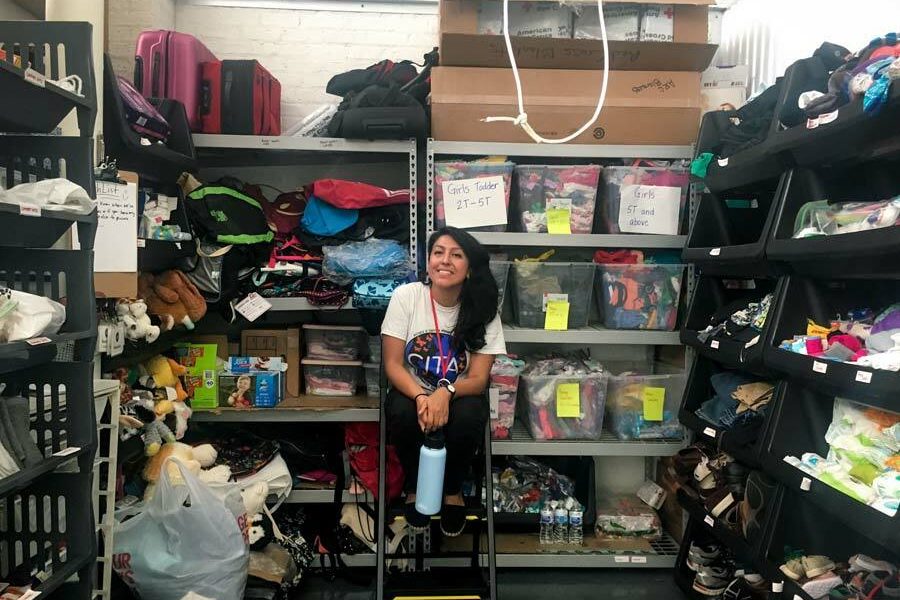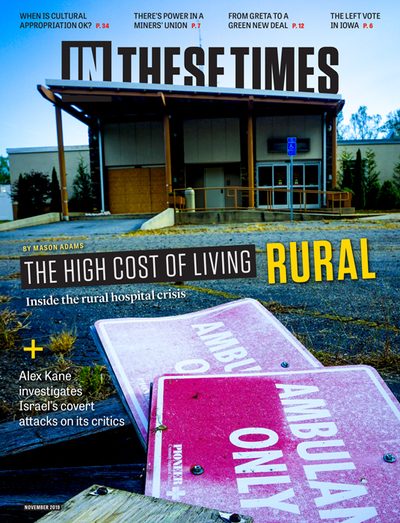The Underground Migrant Support Network
Meet the Chicago chapter of the “aboveground railroad” providing assistance to asylum seekers.
Eleanor Colbert

CHICAGO — One early morning this September, organizer Sendy Soto, 38, asked Manuel (a pseudonym), in line at the busy Chicago Greyhound bus station, if he wanted a cup of tea. (Soto requested a pseudonym for Manuel to protect him from ICE.)
“In Guatemala, where I’m from, there is something called los nervios, and they’ll diagnose you for it,” Soto said. “Whenever there’s something tragic in our town or something difficult, people come with tea to calm you down for los nervios.”
Manuel, 26, was wearing a thin white shirt and holding a plastic bag with all his belongings. He nodded and Soto poured warm chamomile tea into a paper cup.
Soto is the founder of Chicago Immigrant Transit Assistance (CITA), an organization that serves people seeking asylum in the midst of legal processing as they pass through the Chicago Greyhound station. Thousands of families and individuals released from ICE detention centers are sent on Greyhound buses across the United States each year, forced to navigate the arduous transit system without assistance on their way to reach their sponsors and await their hearings.
“We don’t know if there is anyone on the bus who can use our help,” Soto says. “The best thing for us is to just be present and watch out for those who didn’t get assistance on the way.”
CITA is entirely volunteerled, funded through a GoFundMe campaign and donations from the American Red Cross and community groups. Volunteers wait at the bus station in two-hour shifts, day and night, for people like Manuel, who had walked from the ICE processing center a few blocks away, as well as asylum seekers passing through from detention centers around the country. Around 30 volunteers have helped distribute food and clothes, call family members and offer translation services to more than 1,000 asylum seekers since the group’s founding last year.
CITA is one of several volunteer-led groups doing similar work around the country, including the Mariposas Collective in Tennessee, Angry Tias and Abuelas in Texas and Cincinnati Immigrant Transit Assistance. These groups form what Soto calls an “aboveground railroad.”
The Chicago Greyhound station is not easy for asylum seekers to navigate. Information is posted almost exclusively in English, and there is just one part-time Spanish-speaking staff member. Families or sponsors pay for migrants’ tickets, and a last-minute change costs $20 in cash.
Yet, many Greyhound staff members work with CITA to help support these migrants. The same day Manuel passed through, another young man arrived from the Chicago ICE office. Staff and volunteers bought him a ticket, provided him with food and helped him call his family, all within 10 minutes, so he could board the noon bus to New York.
When Soto offered to help Manuel call his wife and young daughter, he was brimming with excitement. His family had been living in Iowa since January, seeking asylum from violence in Guatemala. When Manuel legally crossed the border to join them in June, he was first detained in Texas, then transferred to the Kenosha County Detention Center in Wisconsin for three months, then ordered to post a $7,500 bond for release. Not all asylum seekers are afforded this option — in 2018, the American Civil Liberties Union filed a lawsuit against the Trump administration for illegally detaining asylum seekers with credible cases for extensive periods.
Manuel’s family was able to pay his bond, and he was transferred to the ICE processing center in Chicago in September, where he stood handcuffed until his release hours later. ICE officials gave him a paper map to the Greyhound station, in English, photocopied so many times the streets were indiscernible.
This experience of being moved across the country, paying thousands of dollars in bonds and then being released with little more than a paper map is typical of how asylum seekers are treated in the United States.
Although Soto and another volunteer were able to assist, Manuel still has a long journey ahead as he awaits the outcome of his asylum case, which could take years. As of September, courts were backlogged with over a million pending immigration cases.
“It’s kind of like a Band-Aid,” says Jeanie Vondriska, another CITA volunteer. “Everything’s broken, you’re traumatized, and I’m giving you a cup of ramen?”
Still, CITA’s goal is to help migrants become self-sufficient. “If I just teach somebody how to read the bus schedule, I’m sure they’re not gonna need somebody at the next stop,” Soto says. “They have all the abilities in the world to care for themselves. They just need the resources.”
In the short term, Soto would like to see a more sustainable system at the bus station, similar to Travelers Aid at Chicago’s O’Hare International Airport. Travelers Aid has a permanent desk and paid staff members who provide guidance and support for those in need, including refugees. Longer term, the solution lies in comprehensive immigration reform.
“It is really wonderful that so many kind people can come together and fill the gaps [left] by our government,” Soto says. “But the best way to solve this is to change those policies so that people are treated justly, fairly and have an opportunity to seek safety in this country.”





